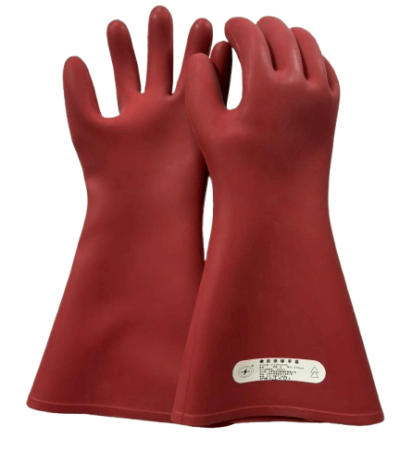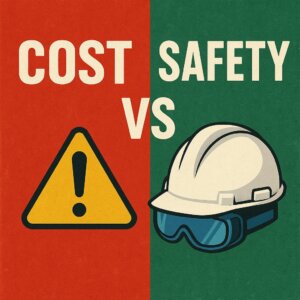As industrial safety awareness grows worldwide, insulation personal protective equipment (PPE) standards have become critical for ensuring workplace safety. However, technical requirements, testing methods, and application scenarios vary significantly across regions. This article provides an in-depth comparison of China’s GB standards, the International Electrotechnical Commission (IEC) framework, the American ASTM standards, and the European EN standards, focusing on voltage ratings, environmental adaptability, and certification processes.
1. Overview of Standard Systems
-
Chinese GB Standards
- Key Standards: GB/T 17622-2008 (Insulated Gloves), GB 12011-2009 (Insulated Footwear).
- Features: Simplified classification (Class A/B/C), emphasis on basic insulation performance, and adaptations for China’s high-humidity and high-altitude environments.
-
IEC Standards
- Key Standards: IEC 60903 (Insulated Gloves), IEC 61111 (Insulation Mats).
- Features: Globally recognized framework, neutral technical parameters, and compatibility with regional regulations.
-
American ASTM Standards
- Key Standards: ASTM D120-14a (Insulated Gloves), ASTM F2413 (Insulated Footwear).
- Features: Focus on multifunctional protection (e.g., puncture resistance, anti-static properties), simplified classification (Type I/II/III), and real-world scenario testing.
-
European EN Standards
- Key Standards: EN 60903 (Insulated Gloves), EN 50321-1 (Insulated Footwear).
- Features: Detailed voltage classes (Class 00-4), stringent durability requirements, and mandatory CE certification for EU market access.
2. Key Technical Differences
1. Voltage Ratings and Classification
- GB Standards: Three classes (A: ≤500V, B: ≤1,000V, C: ≤10,000V) for low/medium/high-voltage scenarios.
- EN Standards: Six classes (Class 00: ≤500V to Class 4: ≤36,000V), covering ultra-high-voltage applications.
- ASTM Standards: Three types (Type I: 500V, Type II: 17,000V, Type III: 26,500V), balancing industrial and commercial needs.
- IEC Standards: Aligns with EN classifications but requires localization for regional implementation.
2. Testing Methods and Performance Requirements
- Electrical Testing: All standards require dielectric withstand, leakage current, and air-tightness tests, but EN and ASTM set stricter thresholds. For example, EN Class 4 gloves must withstand 36kV, while GB Class C gloves are tested at 10kV.
- Durability: EN and ASTM mandate accelerated aging and mechanical strength tests, whereas GB prioritizes initial performance validation.
- Environmental Adaptability:
- GB: Enhanced moisture resistance for coastal and plateau regions.
- EN: Compliance with diverse European climates.
- ASTM: Focus on extreme temperatures (-25°C to +55°C).
3. Design and Material Specifications
- Insulation Levels: GB/T 7251.1-2023 introduces “Category II equipment” (double/reinforced insulation), aligning with IEC 61111.
- Protection Ratings: EN requires IP2XC-rated enclosures; GB references IEC 60529 but adjusts for local industrial conditions.
3. Applications and Market Compliance
- Regional Applications
- GB: Chinese power grids, railways (e.g., RIS-3297-TOM for high-visibility PPE), and mining sectors.
- EN: European energy and utility industries, especially high-voltage grid maintenance.
- ASTM: U.S. construction and manufacturing, emphasizing chemical/mechanical hazard protection.
- Certification Requirements
- China: Mandatory GB certification (e.g., CQC mark); industry-specific approvals (e.g., RIS) for railways.
- Europe: CE certification with full EN compliance.
- U.S.: ASTM certification, often paired with OSHA workplace safety regulations.
4. Future Trends and Recommendations
- Standard Harmonization: GB and EN are converging under IEC frameworks, but regional adaptations remain essential.
- Technology Innovations: Advanced materials (e.g., nanocomposite insulation) and IoT-enabled PPE (real-time monitoring) will drive regulatory updates.
- Strategic Advice:
- Export-Oriented Manufacturers: Prioritize dual compliance (e.g., EN + ASTM) for global market access.
- Domestic Suppliers: Adopt GB/T 7251.1-2023’s reinforced insulation requirements to align with China’s evolving safety landscape.
Conclusion
The technical disparities among global insulation PPE standards reflect regional safety priorities, environmental challenges, and industrial demands. Professionals must align product designs and certifications with target markets while anticipating gradual international harmonization.








